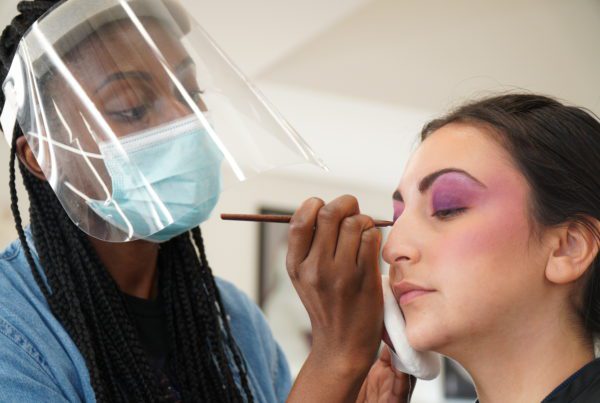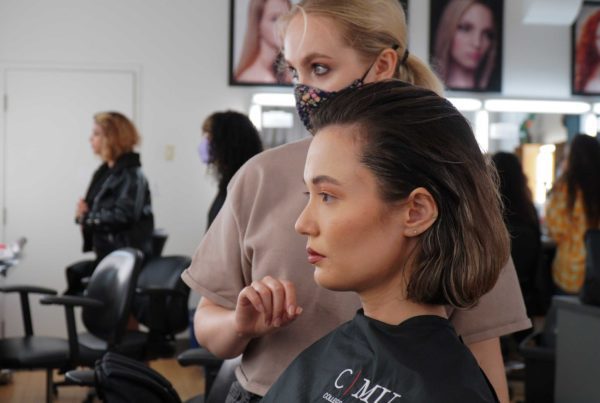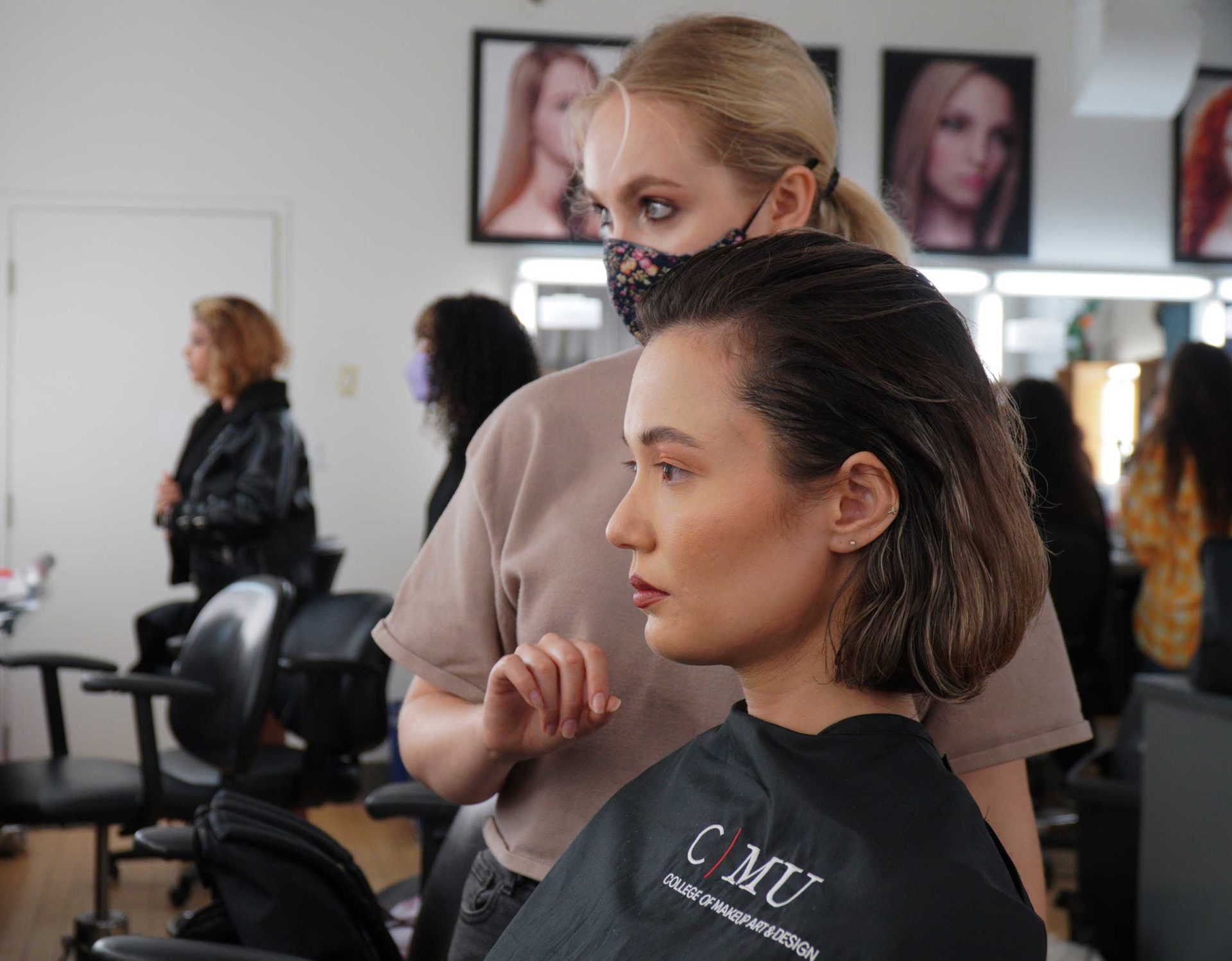
There are many different career paths available in the beauty industry. Some people prefer to work behind the scenes, others enjoy being creative with products, and yet others love creating looks for celebrities.
Whatever path you choose, you’ll need to learn how to do each job well before moving forward. In this post, I’ll outline different careers in the beauty industry and explain how to get your foot in the door of the beauty industry.
Why Choose Editorial Makeup Artistry?
Editorial and fashion makeup artistry is a career path that can be pursued by those who are passionate about beauty, have an eye for detail, and enjoy working with their hands. In addition, this is an excellent profession for those who like to merge their interests in fashion and cosmetics.
The editorial and fashion industries are constantly evolving, so staying up-to-date on the latest trends in this field is essential. You need to keep your skills sharp and continue learning new techniques.
The best part of this career path is that there are no limits on what type of jobs you can do within the industry. For example, you can work as a freelancer, for an agency, or start your own business.
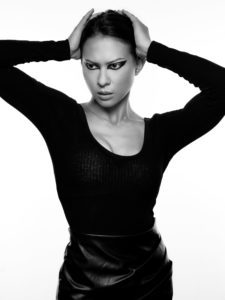
Why Choose Fashion Makeup Artistry?
Fashion makeup artistry is a trendy career choice because it allows you to express yourself through your creativity and apply your knowledge of beauty and fashion products and techniques to create beautiful looks.
This career path has many different options depending on your interests. For example, you may want to specialize in bridal makeup, hair styling, special effects makeup, airbrushing, nail art, skincare, cosmetics, photography, digital imaging, etc.
You can even go into the world of retail, where you will be able to sell makeup directly to customers.
Fashion makeup artistry is the right career path if you enjoy being creative and having fun while working.
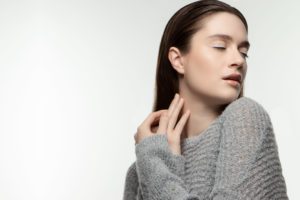
Career Path Options for Both Industries
There are two main paths to pursuing either editorial or fashion makeup artistry. The first option is to become an independent contractor, which means you would be self-employed.
Another option is to join a company as a stylist.
Remember that both industries require a lot of hard work and dedication.
Editorial makeup artistry
An editorial makeup artistry degree program will teach you how to use makeup to enhance the features of models and actors.
You will learn to apply foundation, concealers, powders, blushes, lipsticks, eyeliners, mascara, eyeshadow, blush, bronzer, highlighter, contour, false lashes, etc.
In addition, you will learn how to apply these products using various tools such as brushes, sponges, palettes, powder puffs, etc.
Job description
As an editorial makeup artist, you will be responsible for creating professional-looking makeup looks for influencers, models, and celebrities.
Responsibilities
- You’ll respond to requests from clients, designers, and editors
- You’ll create new ideas for photo shoots
- You’ll work with models and celebrities to ensure they look their best
What the day-to-day looks like
Depending on the client’s needs, you might have to travel from one location to another to set up shoots. You’ll need to drive to venues such as hotels, restaurants, malls, clubs, beaches, etc.
The time spent at each location depends on the number of people involved in the shoot. Shoots last from 2 hours to an all-day event.
When working with models, you must ensure they look their best by applying makeup that enhances their natural beauty while accomplishing the desired look for the shoot.
Where work is displayed
Your work will appear online, in magazines, newspapers, television programs, websites, social media platforms, etc.
Fashion Make Up
A fashion makeup artist may visit clients at their homes, on location, at a runway show, or in a studio. As a fashion beautician, you will apply makeup to models on-site for photo shoots or runway shows.
A makeup fashion stylist uses their in-depth understanding of fashion, makeup, and beauty, to satisfy a client’s objectives and create makeup that is perfect for the runway or a camera. It is crucial to understand the requirements of these two environments. Makeup for the runway will need to be bold and durable to withstand the lights and be seen by the audience. Makeup for fashion publications and prints needs to be precise, and artists will have the opportunity to touch up the look in between shots.
Job description
A fashion stylist works alongside a team of designers, photographers, and stylists to style models for fashion shows and shoots. You will help the model or celebrity look her best by applying makeup that accentuates her natural beauty and draws attention to the outfits they’re displaying.
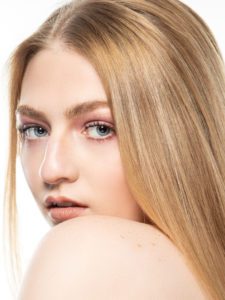
Responsibilities
- You’ll work with the designer to create a makeup look that matches the fashion style.
- You’ll help the model or celebrity look good by applying makeup that highlights their natural beauty.
- You must be able to work in a fast-paced environment.
What the day-to-day looks like
Artists perform most makeup jobs in a studio with a camera, lighting equipment, and a mirror. Some tasks may necessitate frequent travel to various locations such as shopping malls, restaurants, nightclubs, etc.
When working as a makeup artist, you will need to coordinate with the photographer so that he can take the perfect picture.
Where work is displayed
Your work will appear on the runway, in magazines, billboards, advertisements, websites, social media sites, etc.
Enroll in a makeup artistry program
If you want to learn more about becoming an editorial or fashion makeup artist, there are several programs available online or in a traditional in-person format:
CMU offers several makeup artistry programs, including:
- Complete Makeup Artist Program
- Comprehensive Makeup Artist Program
- Global Makeup Artist Program
- Total Fashion Makeup Artist Program
- Photographic & Studio Hairstyling Program
- Creature Design Certificate
- Digital FX Makeup Effects Artist Program
- Double Diploma Opportunity
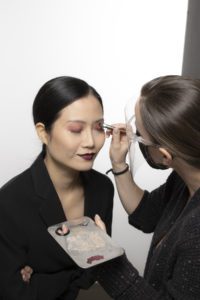
Practice, practice, practice
To become a makeup artist, you must practice your craft regularly. If you’re not already doing so, try scheduling regular makeovers for yourself. It could help improve your skills and give you confidence when applying makeup to others.
You can also join local professional association groups that often offer workshops and seminars that teach new techniques and trends in the industry.
You might also seek the counsel of peers who have already succeeded in their chosen fields. Ask a few questions about the steps they took to launch their career.
Build a portfolio
Before you begin applying for jobs, build a portfolio. Include images of your work along with any relevant information.
You can create a portfolio using Photoshop, Adobe Lightroom, or other software. In addition, you can scan photos into your computer and add text captions.
Perfect your resume
When creating a resume, keep in mind that employers look for specific qualities. For a position as a makeup artist, you’ll want to highlight your experience, qualifications, and achievements in the field.
For example, you can list your work history, education, and training. Then, you can describe your experiences as a makeup artist. Finally, you can explain why you’d like to pursue a career in the industry.
Skills of an Editorial or Fashion Makeup Artist
An editorial makeup artist works closely with photographers and editors to create looks for celebrities, models, and other people featured in print or online spreads.
Fashion makeup artists work with designers and retailers to create looks for runway shows, photo shoots, and other events. They may be responsible for creating looks for individual clients, too.
See below for some of the skills you need to be successful as an editorial or fashion makeup artist.
Airbrush
Airbrushing is one of the most popular methods used by makeup artists today. This technique involves spraying makeup onto the skin using compressed air.
We have three types of airbrushes: alcohol-based, silicon-based, and water-based. It is necessary to learn how to use each category of airbrushes and when each type is considered necessary.
Colour correction
You’ll need to know which colors best compliment the person’s complexion. You can learn about these colors by studying color theory and practicing different skin tones.
Once you’ve determined what colors will best suit the person’s skin tone, you can best choose the colors in your makeup kit.
Black and white photography
Many magazines use black-and-white photography to create a more dramatic effect than traditional color pictures.
Black-and-white images often appear much sharper than their color counterparts.
As a result, it is easier to retouch your subjects’ features. You can concentrate on ensuring their hair, clothing, and background are well-lit.
You can also use the contrast between light and dark areas to make your subjects stand out from the background.
Accent details (i.e., feathers, gems, paint, etc.)
When applying makeup, you should know how to use feathers, gems, and paint to bring your ideas to life. Accent details are a crucial feature of stage, fashion shows, festivals, and special effects makeup.
Texture
Not everyone has the same texture of skin. As a result, different makeup products can work best on different skin types.
An editorial or fashion makeup artist will need to know all about different skin textures and the products that work best for each variety of skin texture to accomplish different looks.
Camera-friendly
The camera doesn’t lie. If you want people to believe your makeup design, you’ll need to get it right.
That means you’ll need to practice until you get the desired results. It’s essential to understand the basics before moving on to advanced techniques.
For example, if you’re planning to apply eye shadow, you’ll need to master blending. You’ll also need to know how your design looks in person versus through a lens.
In a photograph, colors can get dimmer, distorting depth perception. As a result, you should consider adding extra bright colors and primers and using full coverage foundations to help the makeup look translate into an image.
As a fashion makeup artist, you will also need to design and apply makeup on your looks for people to see in person on stage and at runway shows, as well as for the cameras capturing images for media outlets.
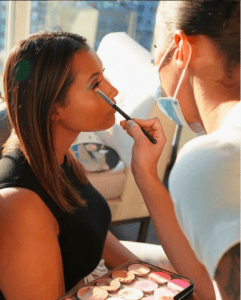
Browse Makeup Artistry Programs at CMU
CMU has a wide range of courses that get you on your way to a successful career in the beauty industry. You’ll get the chance to learn from experienced experts in the many makeup artistry programs offered by the college.
See below for a list of makeup artistry programs that you can attend through CMU:
- Complete Makeup Artist Program
- Comprehensive Makeup Artist Program
- Global Makeup Artist Program
- Total Fashion Makeup Artist Program
- Photographic & Studio Hairstyling Program
- Creature Design Certificate
- Digital FX Makeup Effects Artist Program
- Double Diploma Opportunity
To learn more about studying makeup artistry at CMU, click this link to book a tour of the college and its programs.

